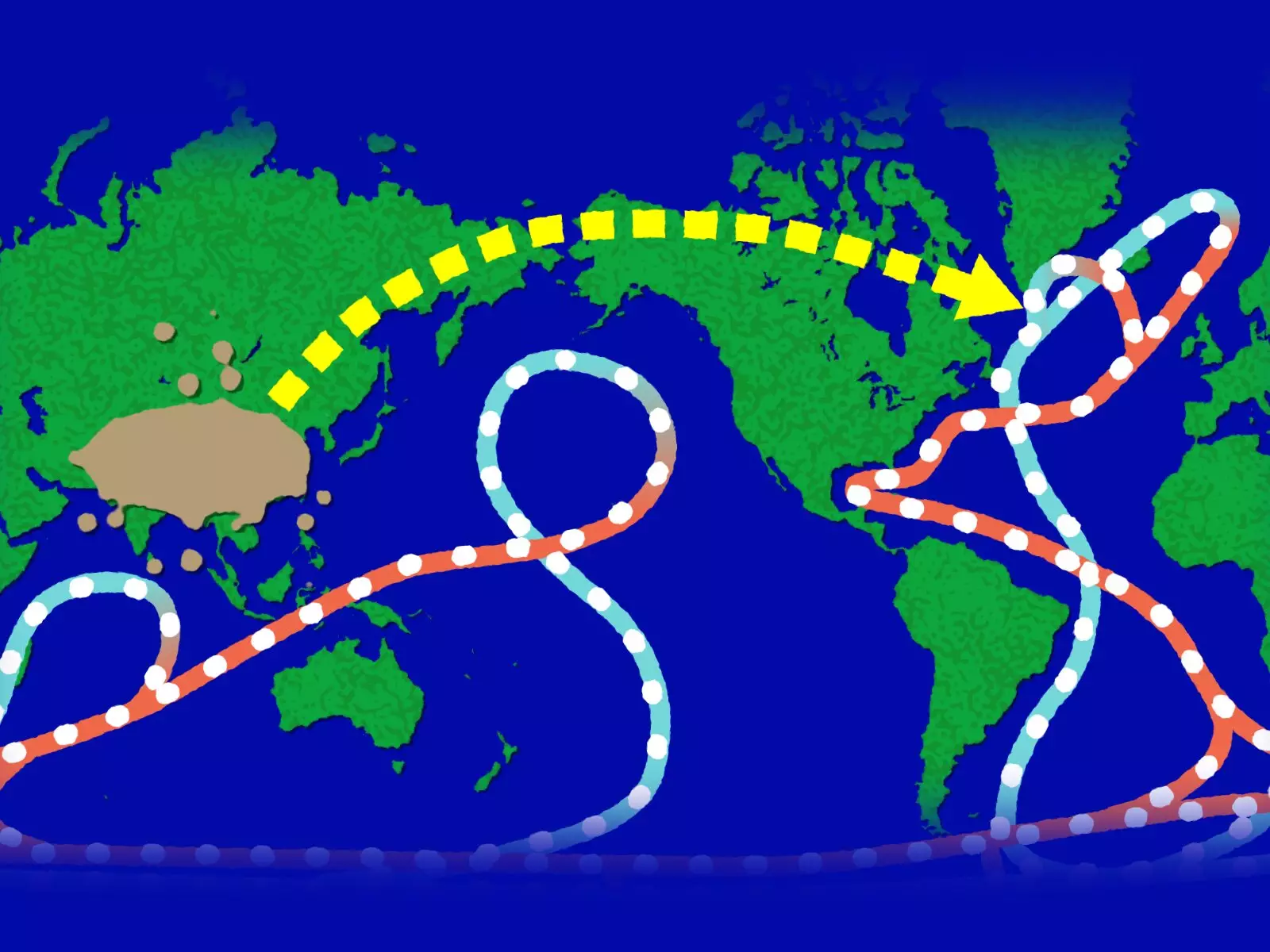The Atlantic Meridional Overturning Circulation (AMOC) has been a subject of extensive research since its monitoring began in 2004. Scientists have delved into the complexities of this system of currents in the Atlantic Ocean, which plays a crucial role in regulating the Earth’s climate. A recent study published in Nature Communications sheds light on a new factor influencing the AMOC – Asian aerosols.
The AMOC is often likened to a conveyor belt, transporting warm water northward and cold water southward in the Atlantic Ocean. This circulation pattern helps regulate the climate of surrounding continents by continuously redistributing heat. Jian Lu, an Earth scientist at the Department of Energy’s Pacific Northwest National Laboratory, describes the AMOC as a vital component of the Earth’s climate system. If the AMOC were to slow down or halt, it could have significant implications for global climate patterns.
The study, co-authored by Lu and an international team of scientists, highlights the role of Asian aerosols in influencing the AMOC. While previous research has focused on the impact of greenhouse gases and anthropogenic aerosols from North America and Europe, the contribution of Asian aerosols has been less understood. The findings of the study reveal that aerosols from Asia, generated from human activities such as transportation, coal combustion, and manufacturing, contribute to slowing down the AMOC.
Using climate model simulations, the researchers demonstrate how increased emissions of aerosols from Asia can shield the Earth from solar heating, leading to a cooling effect that impacts the AMOC. This novel finding emphasizes the interconnected nature of the Earth’s climate system, where actions taken thousands of miles away can have far-reaching consequences on ocean circulation patterns.
The study suggests that reducing emissions of Asian anthropogenic aerosols could not only improve local air quality but also help stabilize the AMOC. By mitigating the impact of these aerosols on ocean circulation, there is potential to safeguard the delicate balance of the Earth’s climate system. The researchers’ use of comprehensive data from various models and projects underscores the significance of their findings in understanding the complexity of atmospheric interactions.
The study contributes valuable insights into the influence of Asian aerosols on the AMOC and highlights the importance of considering global sources of pollution in climate research. As the Earth’s climate continues to undergo changes, understanding the intricate connections between different components of the climate system is essential for developing effective strategies for climate mitigation and adaptation.



Leave a Reply